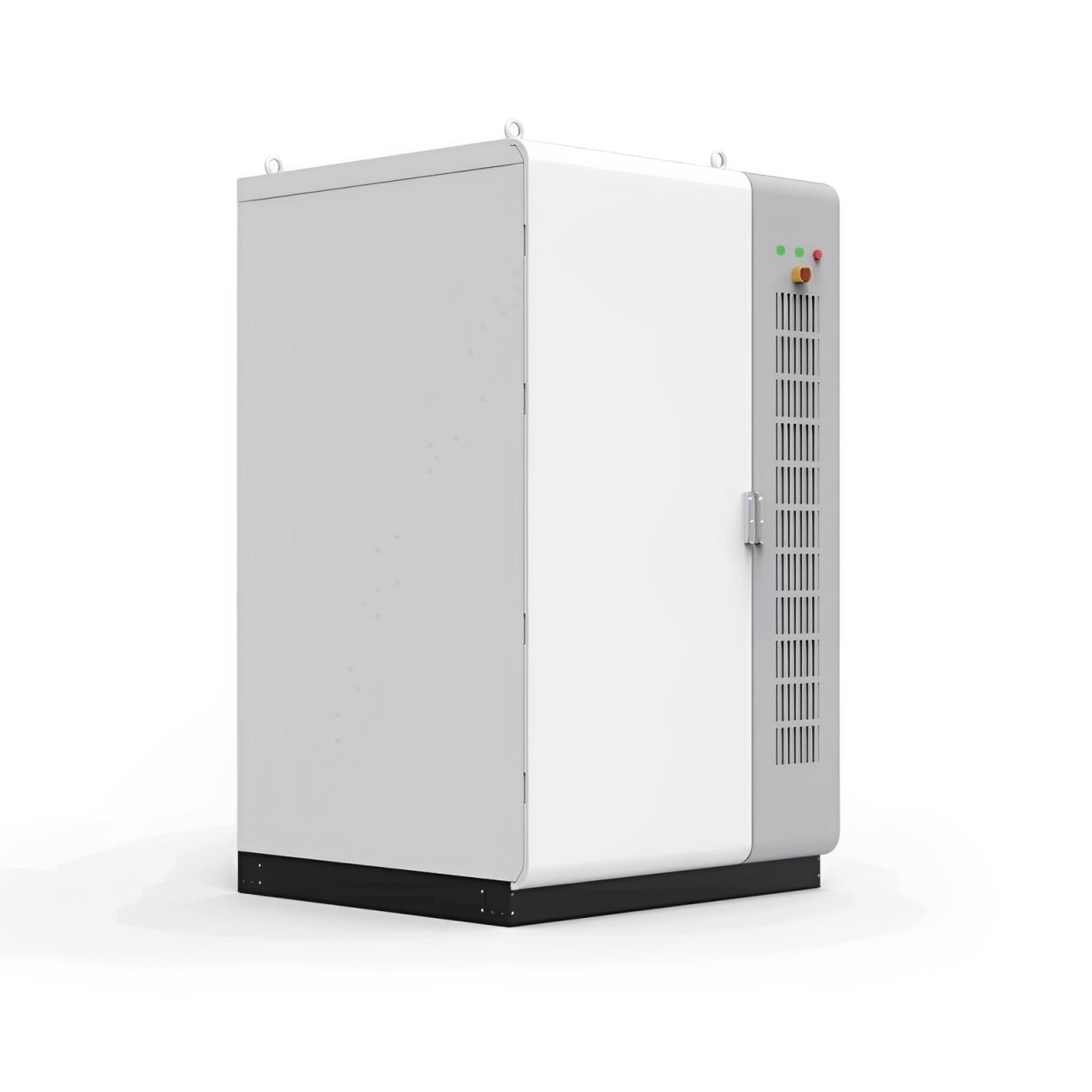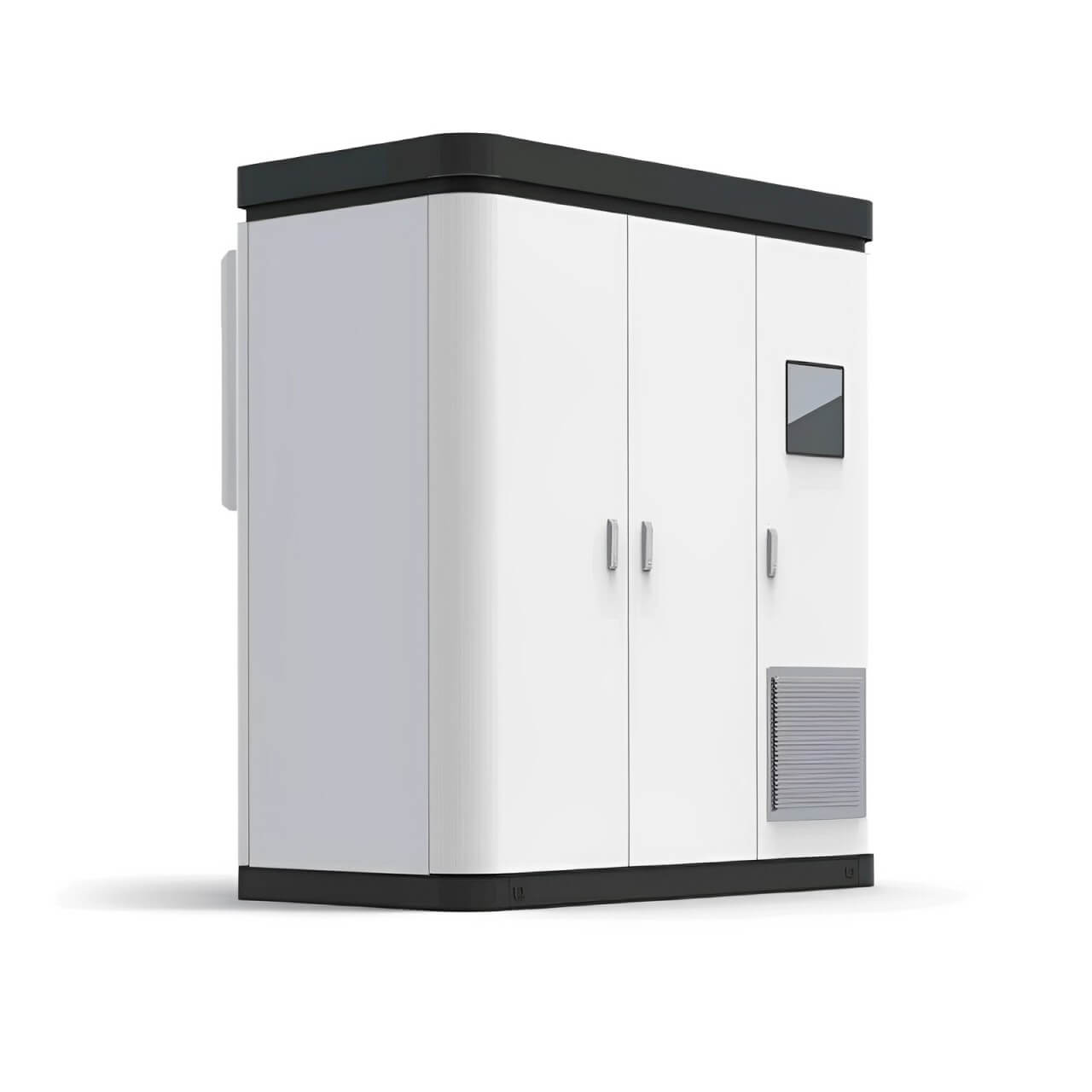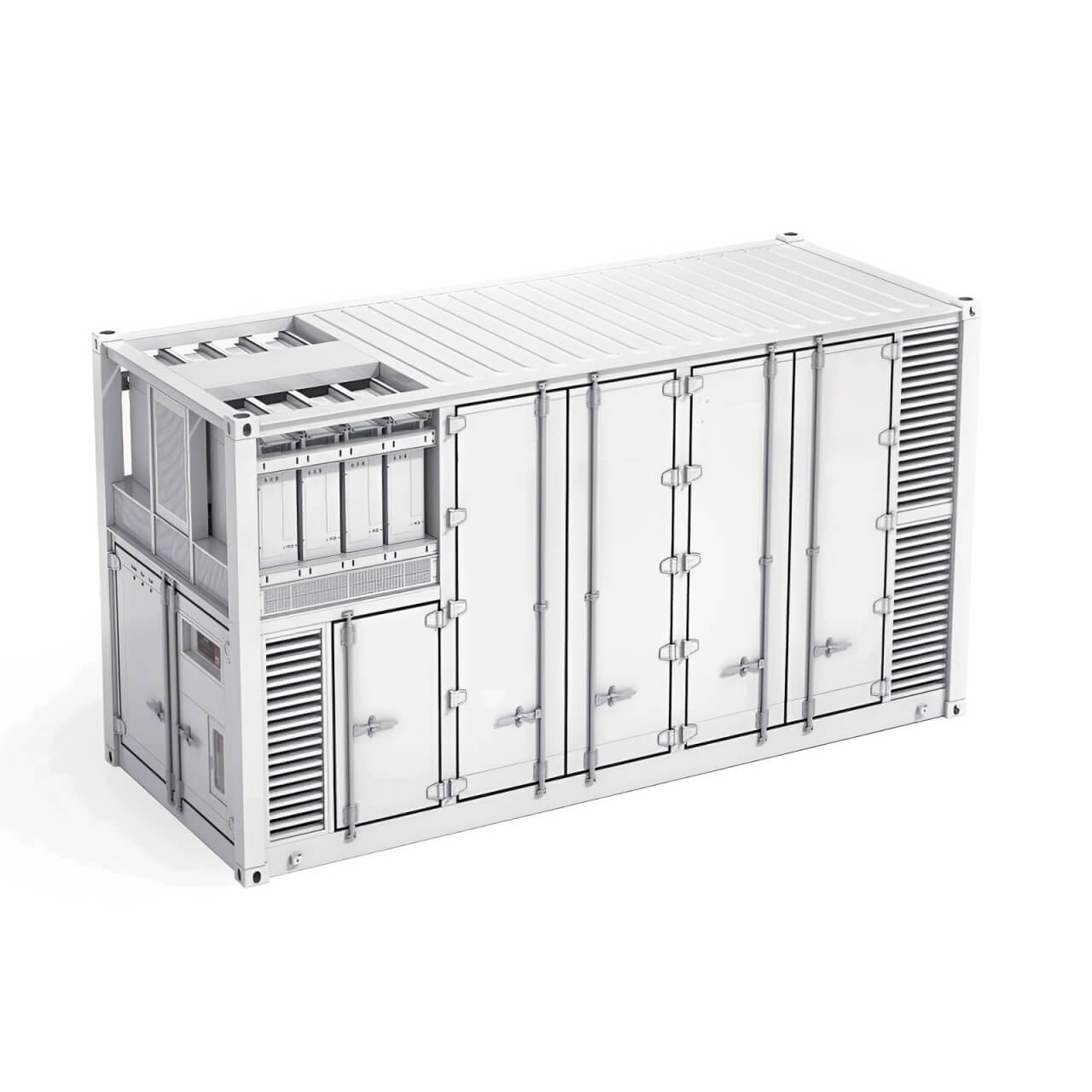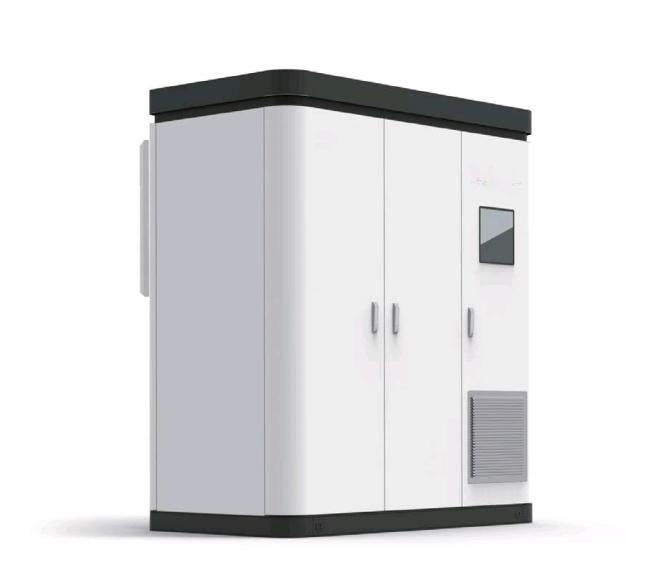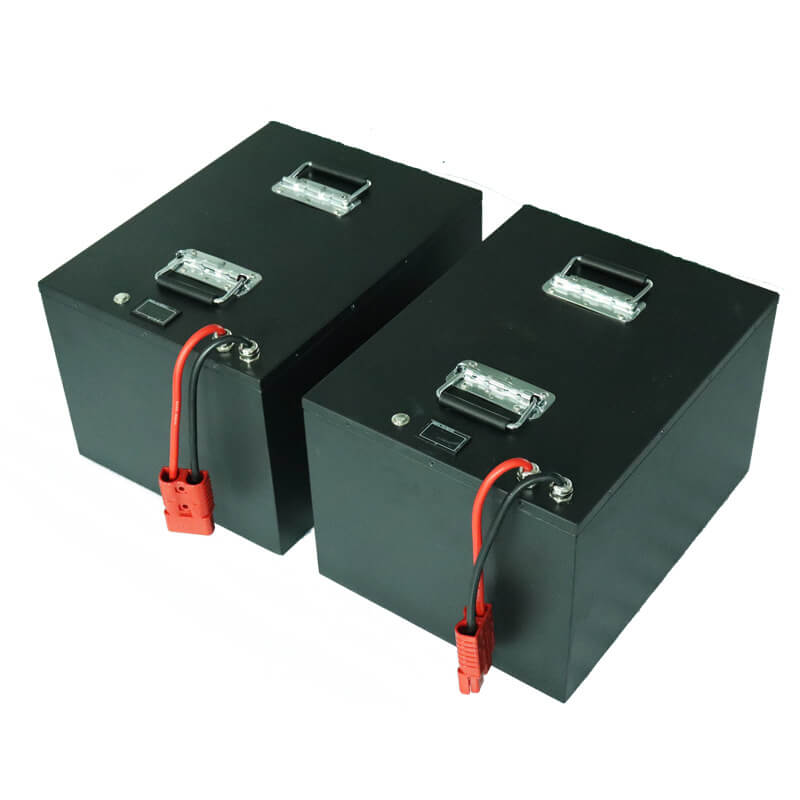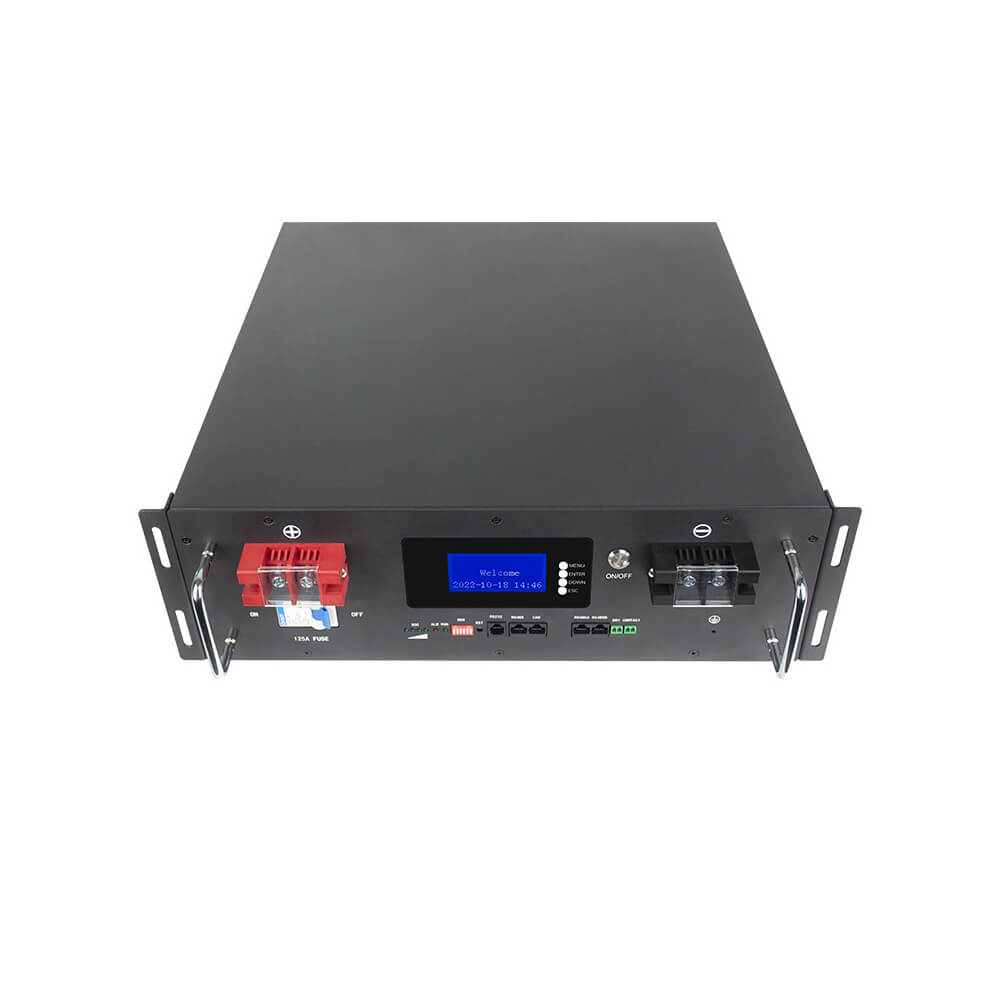Application of lithium battery in ship
This paper discusses the application prospect of lithium battery in Marine energy storage and Marine power, expounds the application policy, specification, application status and existing problems of lithium battery in ships, discusses the types of lithium battery and the advantages and main application scenarios of lithium iron phosphate battery applied in ships, and studies the status of leading enterprises of lithium battery. The feasibility and significance of expanding the application of lithium battery in ships are analyzed, and the preliminary ideas for future expansion are put forward.
I, the application of lithium battery in ship power
At present, the most used power system is the diesel Marine power system, but there are many problems in the diesel power system. First, the diesel engine uses heavy oil or non-renewable energy, the resource pressure is large, and the use cost is extremely high. Second, the problem of noise and vibration generated by diesel engine operation is difficult to solve. Third, diesel exhaust waste emissions are extremely serious, causing pollution to the environment.
With more and more attention to environmental pollution, resource shortage and other problems, the pollution problem of shipping industry has been paid more and more attention. In recent years, the shipping industry of various countries has taken active actions to promote and expand the application of green ship technology.
Although the industry is concerned about many types of new energy for ships, such as LNG, methanol, LPG, biomass fuel, solar energy, hydrogen, fuel cells, lithium batteries, etc., but really can achieve zero emissions, and gradually promote in the maritime industry and have an initial market size of new energy power, currently only lithium battery electric ships. Pure battery-powered ships are mainly suitable for the occasions of fixed routes, short ranges and convenient filling points. For the occasions of relatively long route distances, the diesel-electric hybrid power is more able to take into account energy saving and emission reduction and range adaptability.
1. The application of lithium batteries in pure electric ships
Compared with the traditional propulsion system, the electric propulsion system has the characteristics of good economy, flexible operation, high safety, low vibration and high reliability. The electric propulsion system is widely used in ferries, dredgers, tugs and large cruise ships. With the rapid development of power electronic technology and the increasing energy crisis, electric propulsion has become an irresistible trend to replace traditional diesel propulsion.
Electric propulsion technology relies on its great advantages in mobility, reliability, operation efficiency, layout flexibility, economy, easy maintenance and so on, and is widely used in engineering ships, oil tankers, luxury cruise ships and other ships. In the world are pursuing sustainable development and advocating low-carbon economy today, it will become the driving force for green ships in the future.
In foreign countries, several large Marine electric propulsion manufacturers have their own electric propulsion series products, and have put them into actual operation, such as ABB's Azipod propulsion system, J, Siemens and Schottel's SSP propulsion system. However, Marine electric propulsion has been faced with a technical problem, that is, frequent load disturbance has brought great impact on the performance of the propulsion system. On the one hand, the Marine environment is complex and changeable, and the influence of wind, wave and current on the load is unpredictable, and the disturbance brought by it is constantly changing. On the other hand, some engineering ships (icebreakers, dredgers, offshore drilling platforms, etc.) in addition to environmental interference during operation, their load power demand also changes with the changes of objective factors such as working conditions, which will produce huge load disturbance. Obviously, these load disturbances will bring great impact to the ship's power grid and have a great impact on the performance of the ship's propulsion system. One solution to this problem is the use of energy storage technology. The energy storage unit can improve the stability of the system. When the power system encounters a disturbance, it can absorb or release energy instantaneously, smooth the impact of the disturbance on the system, and enhance the stability of the system. In recent years, mass storage technology has developed rapidly, and several large Energy storage unit manufacturers (such as Corvus Energy and Maxwell) are producing their own mass storage products and putting them into actual operation.
2. Application of lithium batteries in hybrid ships
Hybrid ships used to refer to diesel-electric hybrid ships, but with the gradual promotion of new energy technologies for ships, new energy technologies represented by solar energy and fuel cell LNG began to be applied on ships, making the definition of hybrid ships more and more broad. Hybrid electric ships contain a variety of energy sources centered on electric energy, whose diversity gives the ship the advantages of flexible operation and economy, and only through management of different energy sources, make full use of their own characteristics, coordinated control of the flow between them, in order to ensure the functionality and safety of the ship, while effectively reducing energy consumption and reducing emissions.
In hybrid ships, lithium batteries have two main roles, energy supply and energy storage. Lithium batteries can be designed according to the different requirements of the ship, mainly in the following applications:
1) The power is retained to prevent the ship from losing power.
2) Peak cutting and valley filling: can be used for short-term power supply through lithium batteries when the load is maximum; When the load is low, the grid recharges the lithium batteries.
3) Make up for the lack of characteristics of the generator set: the sudden load can be transferred to the battery pack to bear, effectively avoiding the risk of "stuffy car".
4) Power directly to the grid as electricity: the ship is not equipped with diesel generators, and the battery system is directly used to power the equipment on board, and the propulsion system is powered by an electric motor, so that the ship can achieve "zero emissions".
II, the application of lithium batteries in Marine energy storage
In most cases, the ship's electric propulsion system is powered by an internal combustion engine driven generator set. Because the Marine environment is complex and changeable, the load is changing, when the load deviates from the optimal load point, the fuel will not be fully burned, the utilization rate of fuel will be greatly reduced, and a large number of nitrogen oxides and sulfur oxides will be produced, causing pollution to the environment.
Energy storage technology is one of the solutions to this problem. The energy storage unit is used to store the excess energy when the system is light loaded to prevent the impact of the energy on the grid. When the system is overloaded, the energy storage unit releases energy to meet the demands of the load. Energy storage technology is already well used in the electric vehicle industry. The development of large-capacity energy storage technology makes it possible for energy storage units to be applied to Marine electric propulsion system. Using energy storage units to overcome the influence of power fluctuations on Marine electric propulsion system will be a new direction for the development of Marine propulsion technology in the future.
The energy storage system can enhance the power raising ability of the turbine, improve the speed regulation level of the turbine, improve the quality of the power grid, and realize the smooth output of the power generation, thus increasing the stability and reliability of the system. At the same time, the energy storage system can also store excess energy, which improves the economy of ship operation to a certain extent. In addition, due to the harsh environment of the ship, and long distance from the land, the timeliness of rescue is poor, so the requirements for ensuring the safety of the power system are high. Energy storage system, as the most reliable energy of the power system, is the last barrier to protect the safety of the ship.
According to the differentiation of energy storage carriers, energy storage methods are mainly divided into electrochemical energy storage, physical energy storage and electromagnetic energy storage. Electrochemical energy storage mainly includes battery energy storage and supercapacitor energy storage; Physical energy storage mainly includes pumped energy storage, high pressure air energy storage and flywheel energy storage. Electromagnetic energy storage mainly includes superconducting energy storage.
Among all kinds of energy storage methods, pumped energy storage and compressed air energy storage cannot meet the requirements of ships because of their slow response speed. Superconducting energy storage energy density is too low, the cost is too high and the technology maturity is not high, the reliability and economy are not high in practical application, and it is not suitable for use in ships. The main energy storage methods used in ships are battery energy storage, supercapacitor energy storage and flywheel energy storage. Supercapacitor energy storage and flywheel energy storage have the characteristics of fast response and high specific power. In contrast, supercapacitors store higher specific power, but have very low specific energy, very short discharge time and higher cost.
In battery energy storage, lead-acid batteries and lithium batteries are currently more widely used batteries. Both batteries have the advantages of high rated power and long discharge time. In contrast, lead-acid battery technology is more mature, lower cost, higher safety, but the specific energy is much lower than lithium batteries, and environmental protection is poor. The battery characteristics of the lithium battery itself are more superior, but the technical maturity is not high, the heat dissipation problem is more serious, and the safety is insufficient. Lithium batteries used as power sources, according to the classification of cell materials, mainly ternary lithium, lithium manganate, lithium iron phosphate, lithium titanate and other several, the current mainstream application is ternary lithium batteries and lithium iron phosphate batteries. Ternary lithium batteries have the highest energy density, but for safety reasons, more money needs to be invested in the battery management system, which limits the application of ternary lithium batteries in domestic ships to a certain extent. Lithium iron phosphate battery technology has been quite mature, widely used in land transportation, solar and wind power generation energy storage, power tools and other fields, large-scale production has also made the battery price fell to a more reasonable space. Combined with the actual situation of domestic ships and the current situation of the battery industry, lithium iron phosphate batteries have developed rapidly in the field of ships.
III, policies and specifications for the application of lithium batteries in ships
1. Policy foundation
In order to promote the application of new energy in the Marine industry, the state and local governments have introduced some policies for the application of lithium batteries in the Marine field. At the national level, although there is no specific incentive policy for battery-powered ships, relevant policies can be seen in various documents.
On November 30, 2018, the Ministry of Transport issued the "Implementation Plan for Ship Air Pollution Emission Control Areas", encouraging ships to use alternative measures such as clean energy, new energy, on-board electric storage devices or exhaust aftertreatment to meet the requirements of ship emission control.
On January 4, 2019, 11 ministries and commissions including the Ministry of Ecology and Environment jointly issued the "Action Plan for Pollution Control of Diesel Trucks" to encourage the elimination of inland waterway shipping vessels that have been in use for more than 20 years, to force the scrapping of shipping vessels that have exceeded their service life according to law, and to promote the use of pure electric and natural gas vessels.
In September 2019, the Central Committee of the Communist Party of China and The State Council issued and implemented the "Outline for Building a Powerful Country in Transportation", with special emphasis on strengthening the application research of new energy in the shipbuilding industry, requiring the promotion of new energy, clean energy and other technologies and equipment, improving the design and construction capacity of new energy ships, and strengthening the research and development of cutting-edge key technologies such as new energy.
In June 2020, the Ministry of Transport issued the "Outline for the Development of Inland Waterway Shipping" proposing to increase the promotion and application of new energy and clean energy, promote LNG energy-saving and environmental protection ships, and explore the development of pure electricity, clean fuel and other power ships.
At the local level, the policies introduced by local governments are more targeted, and the release and implementation of these policies have greatly promoted the development of the local battery-powered ship industry. For example, Shenzhen's 2018 "Shenzhen Blue" sustainable Action Plan, Guangzhou's "Guangzhou Port Ship Emission Control Combat Plan (2018-2020)", Wuhan's East Lake and other closed waters prohibited the operation of fuel vessels, and Hubei Province's upcoming regulations prohibiting the operation of fuel vessels in closed waters, etc.
2. Standard basis
Battery-powered ships are relatively new ship types, the design of ships and related products is still in the exploratory period, policies and regulations are still in the improvement period, and the corresponding international and domestic regulations are not sound enough.
Internationally, the relevant standards for pure battery-powered ships are scattered in international maritime conventions, inspection regulations, classification society norms and ships and related industries, but have not yet formed a system. The SOLAS Convention stipulates the requirements for power supplies and generator sets, but has not introduced pure battery power into the convention, which has become an important factor restricting the development of battery-powered ships for international navigation. The International Maritime Dangerous Goods Code regulates the requirements for the transport of battery packs. Some classification societies have also issued guidelines and requirements for electric vessels. The International Electric Commission (IEC) has published 22 standards related to the safety, performance and explosion protection of Marine electrical, battery and fuel cell. These standards meet the requirements of battery-powered ships to a certain extent, but have not formed a system and perfect application specifications.
Domestically, the development of relevant standards for battery-powered ships can basically meet the application of battery power on ships at this stage. The domestic standards committee has formulated 22 relevant industry standards corresponding to IEC, which can provide certain reference for the design and construction of current electric ships. In November 2019, the China Classification Society issued the "Guidelines for the Inspection of Pure Battery Powered Ships". Since 2011, the Maritime Safety Administration of the Ministry of Transport has organized the development of technical specifications for battery-powered ships. On July 23, 2019, the "Statutory Technical Rules for the Inspection of Inland Vessels (2019 Amendment Notice)" was issued, and the "Statutory Technical Rules for the Inspection of Inland Vessels (2019)" was issued on November 13, 2019, which formulated corresponding technical requirements for the electrical requirements of inland vessels and the performance characteristics of lithium iron phosphate batteries. The introduction of the rules has greatly promoted the rapid development of the electrification of the Marine industry. In addition, the East Xinjiang Maritime Safety Administration continues to actively promote the revision of the technical specifications for coastal battery-powered ships on the basis of the specifications for inland battery-powered ships, and the application of lithium iron phosphate batteries on sea ships has been included in the key work of the 2020 ship technical revision. At the same time, it will accelerate the development of research and development of basic general performance and test standards for Marine lithium-ion batteries.
IV, the application status of lithium batteries in ships
Battery-powered ships are one of the most novel ship types in the world, and their electrification characteristics can provide the basis for the development of the next generation of smart ships. Its design and construction is not a simple replacement for the power system, and requires innovation in the design and construction concept. It's a huge challenge for both the design and construction departments. Its ship system and functions, equipment operation and crew skills requirements, the impact of the working environment on the ship, accident and risk prevention and disposal are more complicated than conventional power ships. All classification societies and maritime departments are in the initial stage of research, and the relevant research and design system is not perfect.
1. Industry status
From a global perspective, the application of battery-powered ships is in the exploration and demonstration period, and the operation experience is insufficient. As of the end of May 2019, the number of electric ships in the world was 155, including 75 ships in operation and 80 ships to be built, and the application of large-capacity battery-powered ships between 1000KWh and 4000KWh has been realized. The choice of battery power has both lithium iron phosphate batteries and ternary lithium batteries. More than 20 battery-powered vessels have been built in China's inland waterways, and more than 10 are under construction or planned to be built. Before 2015, the application of battery-powered ships in China was limited to small ships below 600KWh; After 2015, the maximum battery capacity used reached 3000KWh, and all are lithium iron phosphate batteries. China's battery industry is relatively mature, but Marine products and supporting industries occupy a small market share, fewer enterprises involved in Marine battery certification, there is still a large space for development. The core component of a battery-powered ship is the propulsion battery and its supporting battery management system. In the world's top 10 battery manufacturers, domestic manufacturers account for five. In the first quarter of 2020, the total installed capacity of domestic power batteries is about 5.68GWh, involving 51 installed power battery enterprises, of which Ningde Times, BYD, Guoxun High-tech, Yiwei Lithium Energy, AVIC Lithium Power and so on are the top enterprises
2. Port supporting status
Port facilities, especially charging facilities, are one of the factors limiting the development of electric ships. By the end of 2018, China has built more than 2,400 sets of shore power, and there are many problems in the use of these devices and the ship's power supply mismatch, and can not directly charge pure battery-powered ships, but provide a good hardware foundation for battery-powered ships to obtain power. With the continuous promotion of the "Implementation Plan for the Control Area of Atmospheric Pollutant Emission from Ships", especially the mandatory implementation of the policy on the use of Marine shore power, the supporting scale and region of the national shore power is expected to further expand and improve.
Ⅴ. Problems of lithium batteries in Marine applications
1. Lack of unified planning
First, the promotion of battery-powered ships lacks unified deployment. In the application and promotion of battery-powered ships, lithium battery production enterprises, power enterprises, and supporting enterprises are respectively promoted, lacking macro-planning at the national level, and lacking unified planning and guidance for technology research and development, development paths, and promotion models. At present, only individual provinces and cities in China have introduced subsidy programs for the construction and renovation of electric boats, such as the "Implementation Rules for the Interim Measures for the Management of subsidies for the construction of Green and low-carbon Ports in Shenzhen" and the "Implementation Plan for the Emission Control subsidy funds for ships in Guangzhou Port", which has accumulated certain experience. At the same time, due to the low use cost of battery-powered ships, but the initial investment is more, the cost of battery-powered ships propulsion system is generally 2.2 to 2.5 times that of traditional power systems. Due to the small scale of the electric boat industry, the state has not issued a special subsidy policy for new and rebuilt battery-powered ships, and there is a lack of unified deployment in terms of price concessions and shore power planning. The second is the lack of planning for the full life cycle of lithium batteries. The life cycle of lithium batteries is affected by the use of environment, charge and discharge cycle conditions and other factors, and once the battery is aging, the safety risk will increase sharply. The battery load state (SOC) is reduced from 100% to 80%. It is generally believed that the battery is about to end its life. According to the current technical standards, the battery life promised by the manufacturer is 8 years, and the life of the ship is calculated in accordance with 20 to 30 years. For the comprehensive treatment of the entire life cycle of battery production, use, scrap, decomposition and reuse, there is a lack of corresponding policy guidance.
2. Imperfect technical regulations
One is that Marine standards have not yet been established. Lithium batteries according to different application fields of its performance standards are not the same, the current Marine lithium battery performance standards with the relevant standards of electric vehicles, the basic general performance and test standards have not yet formed. Considering that the storage capacity of Marine lithium batteries is dozens of times or even hundreds of times the capacity level of automotive lithium batteries, and the working environment of Marine products is worse, and the safety performance requirements are higher, so the Marine test standards refer to IEC and national standard electric vehicle standards, there are certain limitations and inapplicability. The construction and improvement of Marine standard is an urgent problem to be solved.
Second, the inspection regulations are not perfect. Although the relevant maritime bureau has prepared the technical specifications for inland power ships, due to the weak capacity of the Marine lithium battery industry, it does not yet have the ability to supply long-distance and high-power ships, so the preparation of relevant regulations for coastal battery-powered ships is still in its infancy.
Third, the research on the application of lithium batteries as ship power needs to be further in-depth. Battery-powered ships can generally be classified into two categories according to the form of energy: pure battery-powered ships and hybrid ships. Due to the small number of battery-powered ships, the research on the safety and power matching of such systems and the accumulated experience are still insufficient. The advantages and disadvantages of the two technical paths still need to be verified in actual operation, and there is a lack of data accumulation. The safety of pure battery power is poor, the energy density is low, and the one-time input cost is too high, which is the main obstacle restricting its large-scale application in the Marine field. As a large-capacity energy storage component, the power battery itself has hidden dangers such as fire and explosion, battery failure and control system failure risk during ship navigation, safe return risk caused by failure and special weather conditions during ship maneuvering, and safety accident risk of ship shore operation during docking and charging.
3, the technical level of the enterprise is not high
The overall performance of a battery-powered ship depends on two aspects: the level of ship design and construction and the quality of production of key components such as power batteries and energy management systems.
In terms of ship construction design, it is still in the initial stage, and the current electric ship is still the replacement of energy power, which needs to carry out creative design innovation according to the performance characteristics of electric energy.
As far as battery power and energy management systems are concerned, battery system suppliers and propulsion and power suppliers have not formed with obvious market advantages, and there is a certain gap between core components and products and foreign countries, and the manufacturing capacity of Marine battery systems and Marine battery power is still insufficient.
4, ship type application limited
At present, the capacity of domestic lithium battery powered ships is generally controlled below 5000KWh, and its range is limited by the charging device and charging time, and its application is limited to short-distance passenger transport, ferries, scenic tourist ships, and short-distance fixed route cargo ships.
Ⅵ, the advantages of lithium iron phosphate batteries in the application of ships
The emerging "lithium battery electric ship" with green environmental protection, zero pollution, safety and low cost of use advantages, will become the inland river, lake short-distance transport ships, sightseeing boats, ferries and other vessels of choice. As the safest lithium iron phosphate battery in the lithium battery family, with the breakthrough of related lithium battery technology in safety, long life, high power, long life and other technical problems in recent years, lithium iron phosphate battery with its relatively low price, high energy density, simple maintenance, and excellent safety performance will become the preferred energy for the development of electric ships. Compared with other lithium batteries, lithium iron phosphate batteries used in ships have the following advantages:
1) Lithium iron phosphate batteries are safer
Lithium iron phosphate battery safety and high temperature resistance excellent orthogonal olivine structure LiFePO4 positive lithium iron phosphate battery is currently the safest lithium ion battery cathode material, and does not contain harmful heavy metal elements, its olivine structure of the crystal structure of the solid structure, oxygen (O) and phosphorus (P) with strong covalent bond firmly. The oxygen in the structure is difficult to oxidize with the electrolyte, and the structure will not collapse and heat up even at high temperatures, which can well ensure the stability and safety of the battery charging and discharging process, and the electric peak value of lithium iron phosphate can reach 350℃-500℃, while lithium manganese acid and lithium cobalt acid are only about 200℃. The operating temperature range is wide (-20℃~+75℃), and its excellent high temperature performance and safety have outstanding advantages, making it the preferred anode material for large capacity, medium and high power lithium-ion batteries.
2) Lithium iron phosphate batteries have a longer service life
Lithium iron phosphate battery, complete charging cycle life of more than 2000 times, standard charge and discharge (5 hours rate) use, generally up to 2000 times. The cycle of the lead-acid battery is about 300 times, the maximum is generally not more than 500 times, and the service life is more than 1 to 1.5 years, and the theoretical life of the lithium iron phosphate battery under the same conditions will reach 7 to 8 years. And lithium iron phosphate batteries have high current discharge capacity, and can also use high current 2C fast charge and discharge, while lead-acid batteries do not have this performance.
3) The high unit energy density of mass-produced products has a price advantage
It is reported that the energy density of the square aluminum shell lithium iron phosphate battery cell mass-produced in 2018 is about 160Wh/kg, and some excellent battery manufacturers in 2019 can probably achieve the level of 175-180Wh/kg, and the energy density of the lithium iron phosphate battery cell mass-produced by individual powerful companies has exceeded 190Wh/kg. At present, the market has overcome the high difficulty of lithium iron phosphate battery cell 200wh/kg, and lithium iron phosphate system can continue to improve the energy density, with the market for the future electric ship market, energy storage market is optimistic, the future lithium iron phosphate battery application in the field of electric ships will inevitably increase the proportion of energy density will usher in greater development. Unit prices will also show a downward trend.
4) Green pollution-free environmental protection products
Lithium iron phosphate batteries generally do not contain any heavy metals and rare metals non-toxic and pollution-free (by Societe Generale de Surveillance S.A. Certified), and in line with the European Directive on the Restriction of Hazardous Substances (Restriction of Hazardous Substances) on the use of certain harmful ingredients in electronic and electrical equipment, is an excellent green battery.
Ⅶ, the main ship type of lithium iron phosphate battery used in electric ships
At present, pure electric vessels are used in tourist passenger ships, scenic painted boats, coastal ferries, inland cargo ships, port tugboats, river-sea combined bulk carriers, container ships and other ship types. The ship types include passenger ships, ferry boats, tourist ships, official ships, engineering ships, dry bulk carriers, container ships and other ship types. However, at this stage, it is still difficult for medium and large ships with more than 5,000 tons to completely lithium electrochemical. At present, combined with the current government's promotion in the field of ship electric and the environmental protection requirements of inland rivers and lakes, the electrization of ships, especially pure electric boats, will be mainly developed in relatively closed waters such as inland waters and lakes in the future, mainly concentrated in the markets of ferries, sightseeing boats, inland river (lake) cargo ships and port tug boats along the river and coastal cities. And the tonnage of these ships is mostly concentrated within 2000 tons of Marine lithium batteries in automobiles, computers and other aspects have a large number of applications, but the Marine market is relatively few applications. At present, major breakthroughs have been made in key technologies such as large-capacity battery energy storage systems and battery management systems, and the promotion of external factors such as environmental protection policies of various governments has also provided a strong backing for the development of Marine battery applications. The application of lithium batteries in ships should take this opportunity to be developed and promoted to meet the increasingly stringent environmental requirements.
Ⅷ, CSIT lithium battery company introduction:
China Sodium Times (Shenzhen) New Energy Technology Co., Ltd. is a high-tech enterprise integrating the research and development, production and sales of sodium ion batteries. The company is headquartered in Shenzhen, with offices in Dongguan, Shandong, Shanghai, Suzhou and other places. In addition, we have two factories in Dongguan and Maanshan, Anhui Province, covering a total area of 66,000 square meters, with an annual output of 2.5Gwh battery packs and 5Gwh battery packs and energy storage products. Most of our management have more than 20 years of experience from leading companies in the field of lithium batteries and energy storage, such as CATL, CATL Times and Swart. Haiping Hu, Chairman of the company, is a leader in the field of energy storage materials and finished products with 25 years of experience. So far, we have received more than 70 million yuan of investment from different venture capital companies, which will support us to accelerate the research and development process, expand the scale of production, and achieve greater success in the near future. In addition to China, we also have sales and distribution representatives in Southeast Asia and the United States. With plans to open new sales and distribution offices in Europe and Australia by the end of 2024,CSIT's mission is to contribute our expertise to create a sustainable future for the world.

 简体中文
简体中文 Russian
Russian French
French German
German Japanese
Japanese Korean
Korean Arabic
Arabic Spanish
Spanish